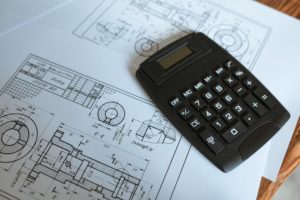The HERS index, or Home Energy Rating System, is a national system for determining and verifying a home’s energy performance. It was developed by the Residential Energy Services Network, or RESNET. RESNET is a not-for-profit organization and accredited by the American National Energy Standards Institute. Its testing and inspection protocols set the standard for the building industry.
How Does the HERS Index Work?
To get a HERS score, a home needs an inspection performed by a certified Home Energy Rater, who will assign it a relative performance score. The lower the number, the more efficient the home. According to the Department of Energy, a typical resale home scores about 130 on the index, while new homes score a rating of about 100. This means that a home with a HERS index score of 130 is 30% less energy efficient than a home that scores 100.
If your home has a score of 100, it meets the current industry standards for efficiency. But even with this score, there is still room for energy-saving measures. Implementing energy-saving measures can lower utility bills, make your home better for the environment, and make your home safer.
What Is Taken Into Consideration During a HERS Inspection?
During a HERS inspection, the rater will look at:
- The ceilings and roof.
- Windows.
- Doors.
- Vents and ductwork.
- Exterior walls, both below and above ground.
- HVAC systems.
- Water heating systems.
- The thermostat.
- Floors over unfinished and unconditioned spaces such as basements and garages.
The data the raters collect is very specific and also includes some basic information about the home, such as the year it was built, its square footage, the number of bedrooms, style, and types of flooring. Constructions details are key to the data collection and include the types of walls, the foundation’s condition.
All RESNET raters are certified and subject to RESNET quality assurance and oversight procedures. They receive extensive training and follow stringent standards.
How Is the HERS Score Calculated?
When the rater calculates the score, they will take into consideration the:
- Water heating.
- Energy used for lighting.
- Energy used for appliances.
- Energy consumption.
- Amount of energy purchased.
The raters put all this data into a computer program that analyses it and totals up the number of points for each item. The report will then provide an overall assessment of the energy usage, provide the score, and give some tips on the areas where you can reduce energy consumption.
Can I Access the HERS Rating of a home?
I Access the HERS Rating of a home?
RESNET has created a national registry with information on their certified rater and home energy ratings. You can use the registry to confirm a rater’s certification and make sure it is in good standing, and you can also use it to check a HERS Index Score of a home.
The information you can find on HERS raters includes:
- Name of a certified rater.
- The rating company name.
- Location of rating company.
- Contact information for the rating quality assurance provider where the rater received their certification. This company is also responsible for the quality assurance oversight.
- If the rater is active or if their certification has been revoked or suspended.
You can also us
e the national registry to find out if your home or a home you are interested in purchasing has ever had a HERS rating. The registry will have information about each of the homes, including the address, the name of the company the conducted the inspection and provided the rating, the date the rater completed the rating, and the HERS Index score.
What Is the Average HERS Index?
The HERS baseline index score is 100. In order for a new construction to meet current building code standards, it has to rate at 100 or below. It’s important to keep this in mind when looking at the scores for a home. If your home or a prospective home has a rating above 100, such as 150, it will use 50% more energy than a new home.
It’s also important to note that even if a home meets the baseline score of 100, it does not necessarily mean that it is an energy-efficient home in terms of green building standards. HERS ratings can go as low as zero. A HERS rating of zero means that a home uses no net energy. These are also called Net Zero homes or Zero Energy homes. In order to achieve this rating, a home often has to have some form of solar energy or generate energy using wind and be connected to the power grid and use net metering.
Is It Possible To Have a Negative HERS Index?
Some homes are so efficient that they generate more energy than they draw from the power grid. The negative number represents the amount of clean energy the home puts back into the grid. It’s base on a scale of 100. A house with a negative HERS rating is referred to as a Positive Energy Home.
How Can I Improve My Homes HERS Rating?
You can lower a HERS rating by taking just a few simple steps.
- Replace incandescent light bulbs with LEDs. Even though incandescent lights are no longer in production, you might still have some around the house.
- Insulate crawlspaces.
- Insulate the attic.
- Insulate rim joists on the edge of a wood floor frame. This is a common source of energy consumption and leaks in older homes.
- Upgrade to a more energy-efficient furnace.
The Benefit of Knowing and Understanding A HERS Rating
For homeowners, knowing your home’s HERS rating gives you the tools to determine where you can save money on your energy bills. Inefficient energy usage can also lead to health issues. For homebuyers, the HERS rating will provide you with the information you need to make an informed decision about affording the home, including the monthly energy bills and maintenance. It can also be useful when comparing several different homes. If you equally like two houses, the one with the lower HERS rating might be the better choice.
To find out more about HERS rating and how you can get your home inspected contact us at Energy Diagnostics. We can help with all kinds of energy testing whether it’s for a new construction or an older home.
